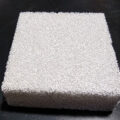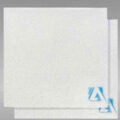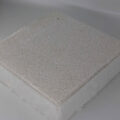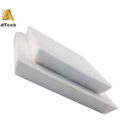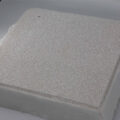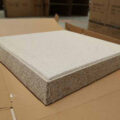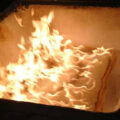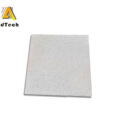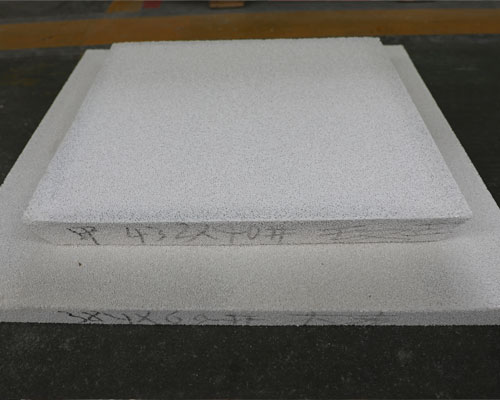
The square ceramic foam filter is widely used in molten aluminum filtration in the aluminum casting process. It can prevent particle impurities in molten aluminum from entering the slab and improve the quality of aluminum processed products. The square ceramic foam filter plate is generally installed in the filter box, which can effectively filter out large debris, absorb small debris in the molten aluminum, refine the crystal structure of the casting, reduce the hydrogen content in the molten aluminum, and remove the molten aluminum through adsorption the harmful elements in Na and K. The ceramic foam filter is currently an effective tool for removing oxidized inclusions in the melt.
Practice has proved that the ceramic foam filter is an effective tool for removing oxidized inclusions in the melt. General fiber filtration can only remove large impurities, while the ceramic foam filter system can filter both large and small impurities.
The ceramic foam filter plate has a multilayer network and multi-dimensional through holes, and these holes communicate with each other. When filtering, the molten aluminum will carry inclusions along the tortuous channels and pores. When the liquid aluminum contacts the foam skeleton of the filter plate, the inclusions will be directly intercepted, adsorbed and deposited. When the melt flows in the holes, the filter plate channels will bend. In addition, the melt flowing through the channel changes the flow direction, and the inclusions collide with the hole wall anvil and firmly adhere to the hole wall.
The size and porosity can ensure the effect of the filter plate. The greater the porosity of the filter plate, the worse the slag removal effect. For demanding aluminum castings, filter plates with small porosity should be selected.
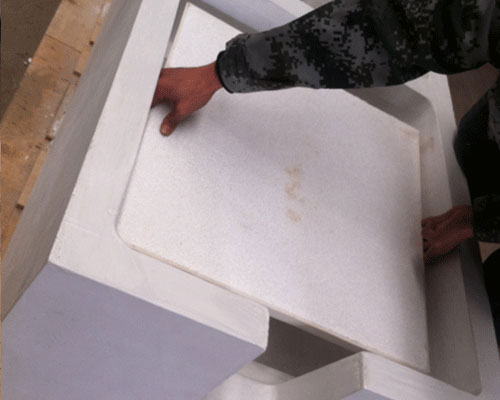
The square ceramic foam filter is installed in the CFF filter box between the furnace mouth and the casting machine. The filter box is made of refractory material. It can withstand a variety of hot and cold shocks without breaking. It also has the advantages of high strength and good insulation properties. The closer the filter box is to the manifold, the better. Because it can shorten the flow distance of molten aluminum and reduce the regeneration of oxides. The molten aluminum flows out from the furnace mouth through the filter box, and then flows into the casting machine through the launder.

